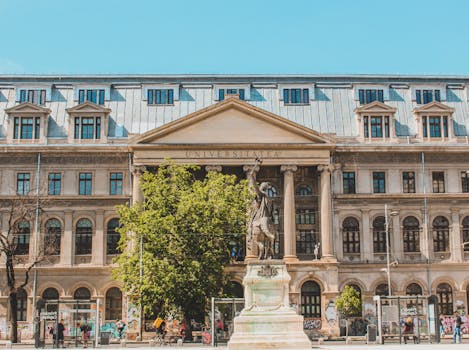
Traveling Through Time: How Europe’s Historical Heritage Shapes Modern Lifestyles in 2025
Traveling Through Time: How Europe’s Historical Heritage Shapes Modern Lifestyles in 2025. Europe, a continent steeped in history and tradition, has a profound impact on modern lifestyles. From the ornate architecture of Paris to the vibrant art scene of Berlin, Europe’s historical heritage continues to shape the way we live, work, and interact with one another. In this article, we’ll explore the ways in which Europe’s rich history influences modern lifestyles, and what this means for travelers and locals alike.
Architecture and Urban Planning
One of the most striking examples of Europe’s historical heritage is its architecture. From the medieval castles of Scotland to the Baroque palaces of Italy, Europe’s buildings are a testament to the continent’s complex and varied history. Many of these structures have been beautifully preserved and restored, offering a glimpse into the past and inspiring modern architects and designers. The narrow streets and alleys of Europe’s historic cities, such as Venice and Amsterdam, have also influenced the way we think about urban planning, with many modern cities incorporating similar designs to create more sustainable and livable environments.
Art and Culture
Europe’s historical heritage has also had a profound impact on the continent’s art and culture. From the masterpieces of the Renaissance to the avant-garde movements of the 20th century, European art has played a significant role in shaping modern culture. Many of Europe’s museums and galleries, such as the Louvre and the Tate Modern, are home to some of the world’s most famous and influential works of art, attracting millions of visitors each year. The continent’s rich cultural heritage has also inspired a thriving arts scene, with many modern artists, writers, and musicians drawing on Europe’s history and traditions for inspiration.
Cuisine and Food Culture
Europe’s historical heritage has also influenced the continent’s cuisine and food culture. From the rich sauces of French cuisine to the hearty stews of Irish cuisine, European food is a reflection of the continent’s complex history and cultural diversity. Many of Europe’s traditional dishes have been passed down through generations, with modern chefs and restaurateurs putting their own spin on classic recipes. The continent’s vibrant food scene has also been shaped by its history of trade and migration, with many modern European cities offering a diverse range of international cuisines.
Modern Lifestyles and Traditions
Despite the many changes that have taken place in Europe over the centuries, the continent’s historical heritage continues to shape modern lifestyles and traditions. From the Christmas markets of Germany to the Carnival celebrations of Italy, many of Europe’s festivals and holidays have their roots in the continent’s rich history. The way we live and work has also been influenced by Europe’s historical heritage, with many modern cities incorporating traditional crafts and industries into their economies. The continent’s emphasis on work-life balance, with many countries offering generous vacation time and flexible working hours, is also a reflection of Europe’s historical values and priorities.
In conclusion, Europe’s historical heritage continues to play a significant role in shaping modern lifestyles in 2025. From architecture and art to cuisine and culture, the continent’s rich history has left an indelible mark on the way we live, work, and interact with one another. Whether you’re a traveler or a local, Europe’s historical heritage is an integral part of the continent’s identity and charm, offering a unique and unforgettable experience for all who visit.





